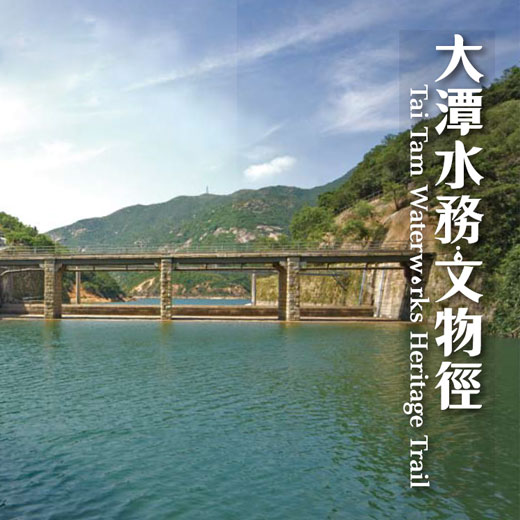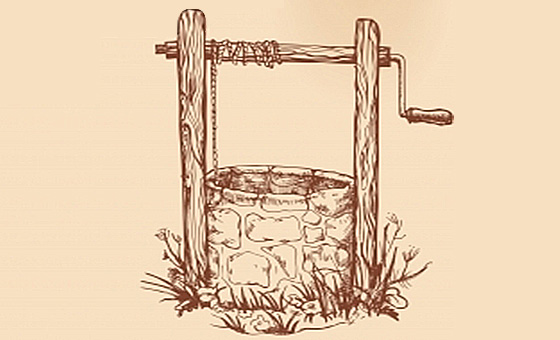
In 1851, the Government set aside in its budget for sinking wells to provide water to the public for free. In the period before 1860, the Government also constructed small ponds at the upper parts of main streams to store water for public use.
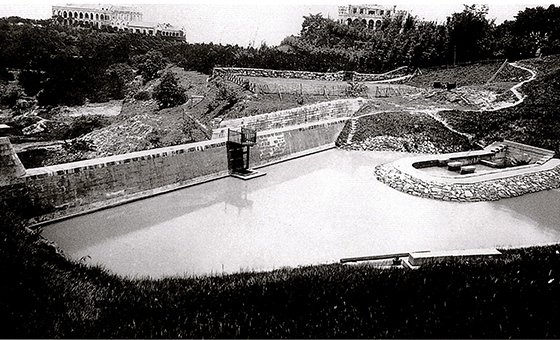
In 1863, Hong Kong’s first impounding reservoir - Pok Fu Lam Reservoir with a capacity of 2 million gallons (about 9 100 m3) was commissioned and started to supply water. The extension of reservoir completed in 1877 boosted the overall capacity to 68 million gallons (about 310 000 m3). The Pok Fu Lam Reservoir is still making contribution to Hong Kong’s water supply.
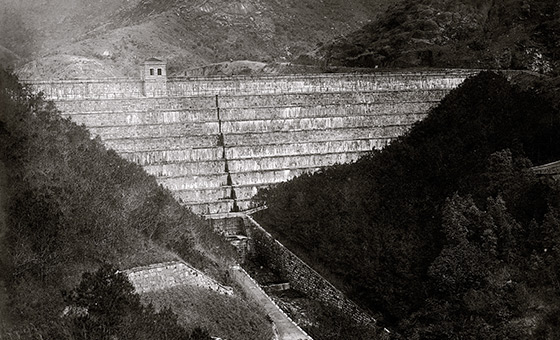
The Pok Fu Lam Reservoir was too small in capacity to cater for the needs of Hong Kong’s increasing population. The Government embarked upon the construction of the Tai Tam Reservoir under the Tai Tam Valley Scheme. Tai Tam Group of Reservoirs took some 35 years to complete – from commencement of construction of the Tai Tam Upper Reservoir in 1883 until the opening of Tai Tam Tuk Reservoir in 1918.
Today, the entire Tai Tam scheme of reservoirs and dams remain an important link in the city’s supply of fresh water. They also stand as testaments to the innovative engineering that underpinned much of Hong Kong’s urban, social and economic development throughout the 20th century.
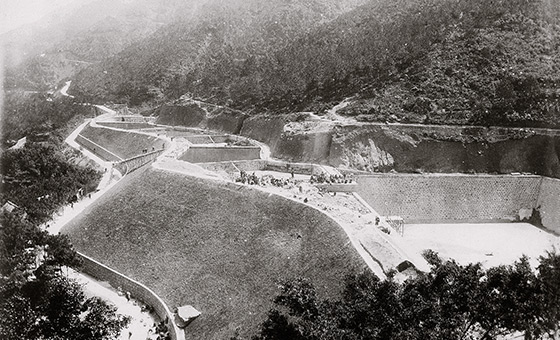
The Tai Tam Valley Scheme included the building of the first water treatment works in Hong Kong at Albany Valley (today’s upper reach of Cotton Tree Drive). The treatment works made use of the slow sand filter beds to treat the raw water conveyed from Tai Tam reservoir with an output of 5.7 million gallons (about 26 000 m3) per day.
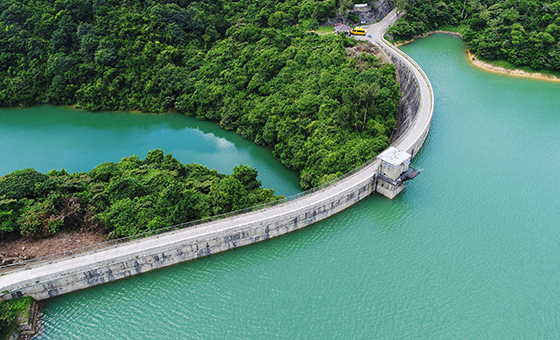
The construction of the Kowloon Reservoir changed the way in which water was supplied to the Kowloon Peninsula. Rainwater stored in the reservoir replaced well water and subterranean water pumped out by the Yau Ma Tei Pumping Station. The reservoir system was expanded several times. The final system now known as the Kowloon group of reservoirs consists of four reservoirs with a total capacity of 2 873 000 m3.
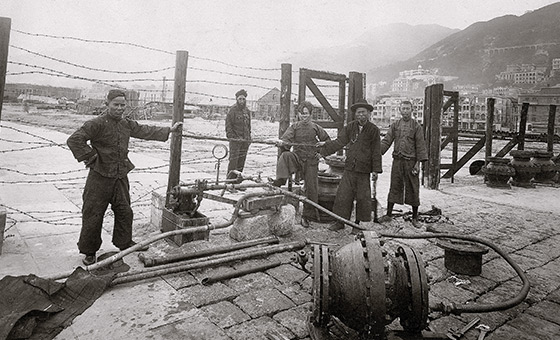
The first cross-harbour submarine pipeline was completed in 1930 to relieve water shortages on Hong Kong Island. In those days, laying of nearly 6 000 ft (1 830 m) length of pipeline with a diameter of 12 inches (300 mm) along the seabed was an engineering challenge but the work was completed within an amazing 57 days.
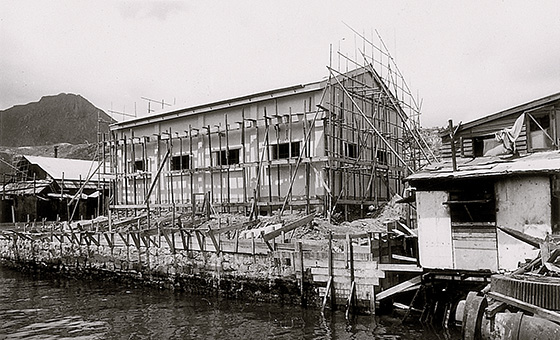
In 1957, in order to save fresh water, the Water Authority suggested to install sea water flushing systems in the newly developed areas of Kowloon, such as Shek Kip Mei and Li Cheng Uk (resettlement areas which had a high population density). This scheme was proved to be successful and was extended to other parts of Hong Kong.
Seawater is a sustainable water resource and continues to play an important role in Hong Kong’s water management. Nowadays, the seawater supply coverage has been expanded to 85% of Hong Kong’s population.
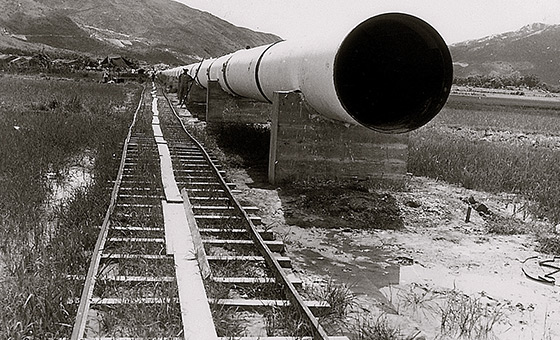
As early as in 1960, the Hong Kong Government was well aware that the increasing fresh water demand in Hong Kong could no longer be satisfied by rainfall solely, and the procurement of fresh water from Guangdong Province was the most efficient way for fulfilling the unmet water needs. In November 1960, the Governments of Guangdong Province and Hong Kong reached an agreement on importing 22.7 million cubic metres per year of raw water from the Shenzhen Reservoir to Hong Kong every year.
In 1963, the Governments of Guangdong Province and Hong Kong held several rounds of discussions and reached a consensus on the implementation of the Dongjiang-Shenzhen Water Supply Scheme. The Scheme was approved by Prime Minister Zhou Enlai and granted a special fund by the Central People’s Government for its construction works at the end of the year. In 1965, the Dongshen water supply infrastructure was completed and Hong Kong began to receive water from Dongjiang.
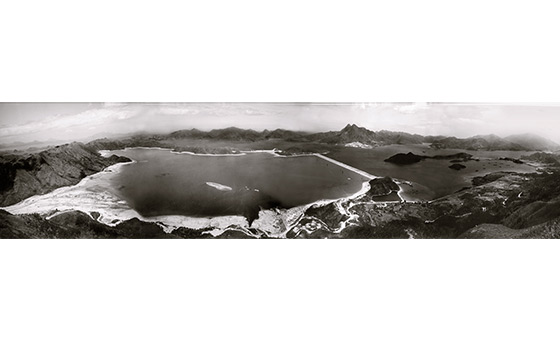
Owing to the lack of land available for building further sizeable reservoirs, in 1959 the Government began searching for a site to form a reservoir as a lake reclaimed from the sea. The authorities chose Plover Cove, near Tai Po, in Tolo Harbour, to construct a man-made lake – Plover Cove Reservoir. The sea water would be pumped out before the lake could be used to store fresh water.
Construction work started in 1961 and was completed in 1968 at a cost of $407,000,000. Fresh water coming from the Tai Mei Tuk Pumping Station of the Plover Cove Reservoir was transferred to the Sha Tin Water Treatment Works, where it was treated and then delivered through pipelines in the Lion Rock Tunnel to Kowloon and then also to Hong Kong Island.
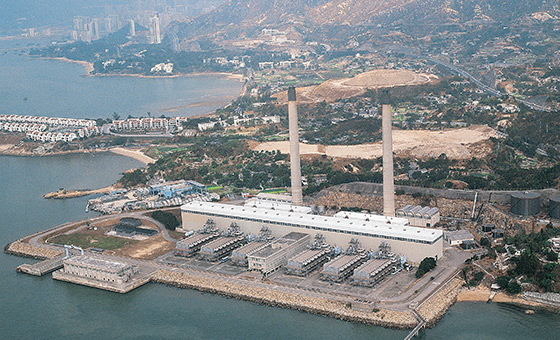
In 1973 the Government officially embarked on constructing the world’s largest desalination plant at the time – the Lok On Pai Desalter. In October 1975, the first unit of the Desalter was commissioned. Due to the oil crisis in the early 1980s, the price of producing 1 000 gallons of fresh water was expected to be $38 in 1981, which was some 8 times higher than that of 1974. Against such an escalated cost for desalination, the Government finally closed down the Desalter in 1982.
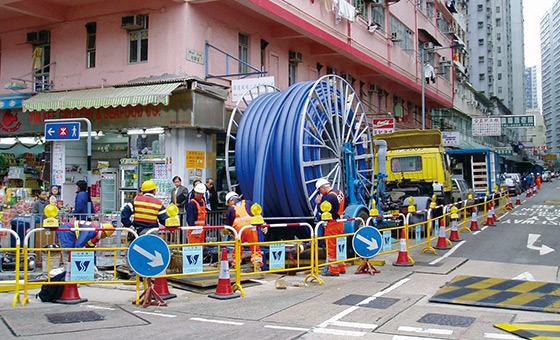
Starting from 2000, the Water Supplies Department had implemented the Replacement and Rehabilitation Programme of Water Mains (the Programme) to replace or rehabilitate in stages some 3 000 kilometres of aged water mains in the territory, so as to rejuvenate the water supply network in a comprehensive and cost-effective manner. The Programme has been substantially completed at the end of 2015.
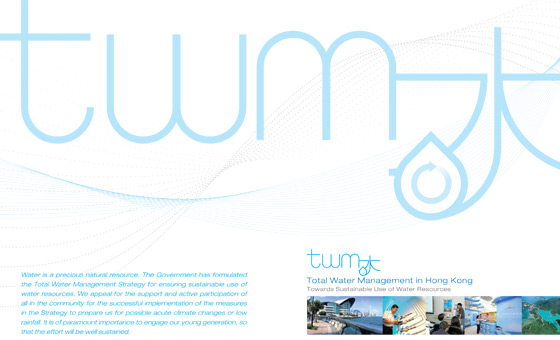
The Total Water Management Strategy (the Strategy) promulgated by the WSD in 2008 has mapped out the strategy for a balanced supply and demand of water to ensure water security and support sustainable development in Hong Kong. The Strategy puts an emphasis on containing the growth of water demand through promoting water conservation and strengthening water supply management.
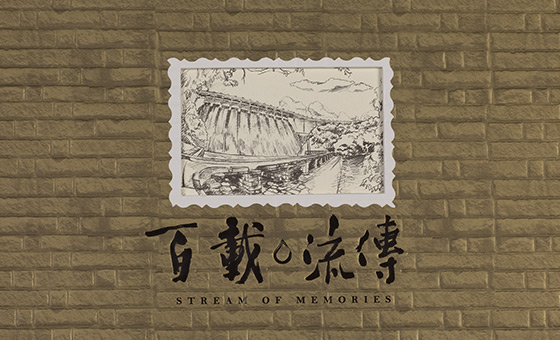
41 waterworks structures in Hong Kong were declared historic monuments. They have been integral to the development of Hong Kong over the past 160 years.
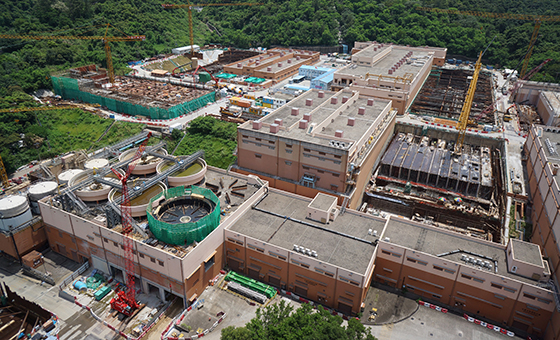
The expansion of Tai Po Water Treatment Works (WTW) project represents WSD’s vision to enhance the reliability and flexibility of the water supply and distribution system. The Phase One expansion works was completed in 2011 and has boosted the output capacity of the Tai Po Water Treatment Works to 400,000 cubic metres of water per day. The Phase Two expansion works has commenced in 2013 and will increase its capacity to 800,000 cubic metres per day by 2018.
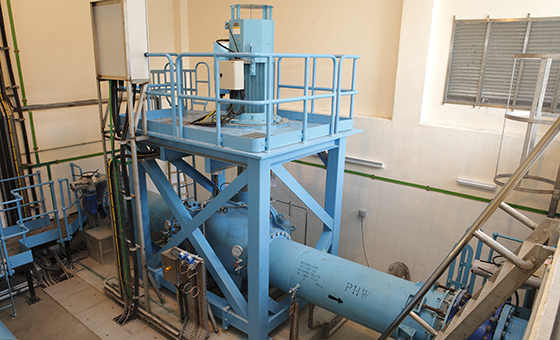
The hydropower plant at Tuen Mun Water Treatment Works is an important RE project for the Water Supplies Department and it is the first of its kind in Hong Kong. Designed and implemented by the Water Supplies Department, this innovative and environmental-friendly renewable energy project is a pioneer in the world to construct 500kW hydropower facilities at a water treatment works.
The hydropower project in Tuen Mun is carried out in two phases. The first phase of the works has been completed successfully in May 2013 with the first generator being put into operation, while the second phase of work has also been completed in early 2017. We estimated that the hydropower plant will help the WTW save about 3 million kWh of electricity annually in addition to reduce about 2000 tonnes of carbon dioxide emissions each year from burning fossil fuels by the power company. It also enhances the stability and reliability of the operational facilities of the water treatment works.
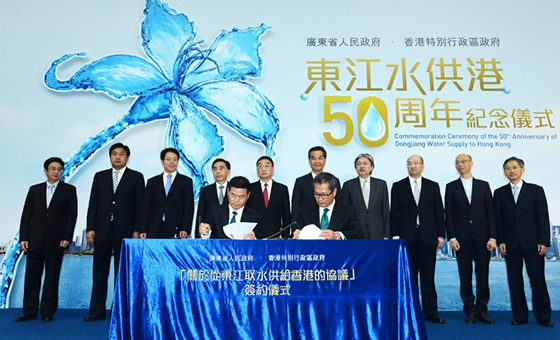
In 1965, the Dongshen water supply infrastructure was completed and Hong Kong began to receive water from Dongjiang to resolve the problem of Hong Kong's inadequate water resources. Since then, Dongjiang water has supplied 70 to 80 per cent of Hong Kong's total fresh water requirements annually. Year 2015 marks the 50th anniversary of the Dongjiang water supply to Hong Kong. The Governments of the Hong Kong Special Administrative Region and Guangdong Province launched a commemoration ceremony .
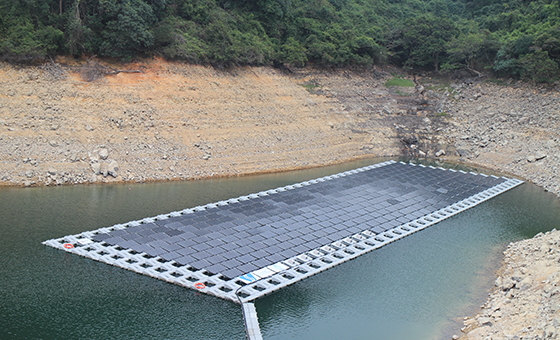
At present, there are 17 impounding reservoirs in Hong Kong, but not all of them would be feasible to install FPV over their water surface. Apart from technical requirements, we have to take into account the ecological and environmental as well as landscape impacts since most of these reservoirs are located in the protected scenic areas of the country parks. In order to explore the potential of installing FPV systems on reservoirs, we started off by implementing two small-scale pilot projects at Shek Pik Reservoir and Plover Cove Reservoir, each of which will be designed for a generation capacity of 100kW. The first pilot system has been successfully installed at Shek Pik Reservoir in February 2017. The system can generate as much as 120,000 units (kilowatt-hours) of electricity annually, supplying electricity to the nearby pumping station of the reservoir. The amount of electricity generated is equivalent to the annual electricity consumption of 36 average households with a reduction of 84 tonnes of CO2 emission.
The second pilot at Plover Cove Reservoir is scheduled to be completed by end-2017. These two pilot projects will lay a solid foundation with some useful reference data for the future implementation of large-scale FPV farms on reservoirs in Hong Kong.


